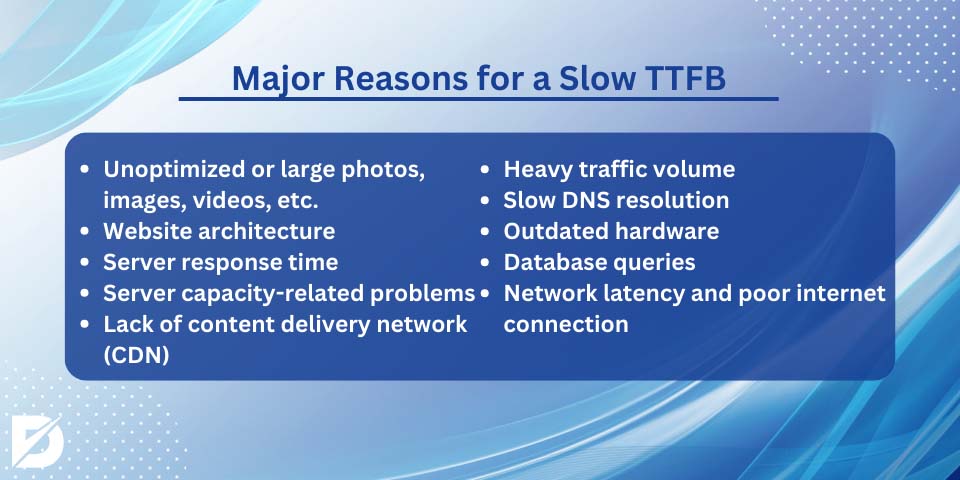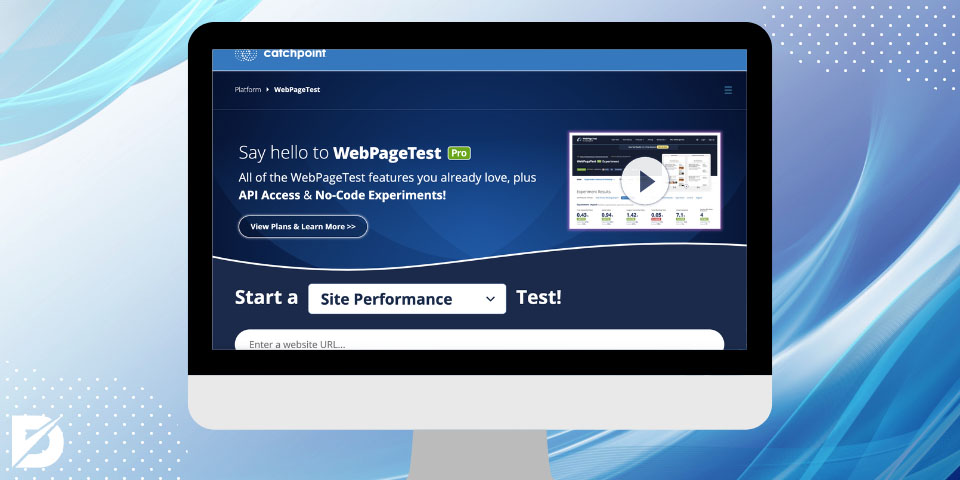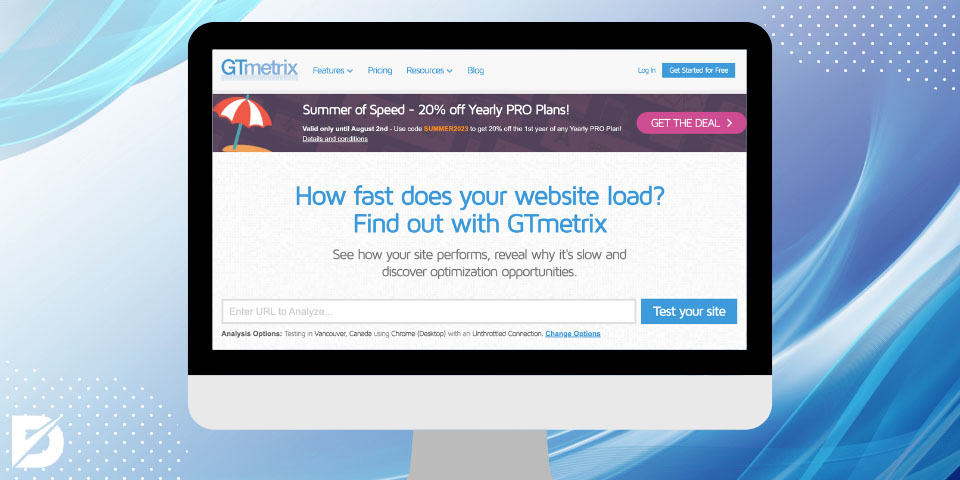Today, we have a comprehensive guide on Time to First Byte. It doesn’t matter if you are a startup or an international business owner; you know the importance of SEO. Here, the relationship between SEO and TTFB is so closely intertwined that it is impossible to separate them. In our guide, we’ll briefly introduce First Byte Time’s definition. Second, we’ll examine the difference between First Byte Time and website speed. Third, we’ll hint at a good Time to First Byte time for optimal website performance. Fourth, we’ll look at three primary methods for measuring the First Byte Time of your website. At the end of our guide, you can also see 11 ways to reduce server response time, from optimizing the code and content of your web pages to eliminating any unnecessary plugins or extensions. We’ve talked enough; let’s dive!
What Is Time to First Byte?
TTFB – short for Time To First Byte – can be defined as a metric that calculates how long a web server responds with the first bit of data after receiving a request from a web browser. To put it simply, First Byte Time measures how fastly a website starts to load after a user types in a URL or clicks on a link.
Why Is Time to First Byte Essential?
Time to First Byte is an important metric as it can directly affect how fast a website loads, directly impacting the visitor’s experience. The metric is critical in SEO as search engines like Google or Yahoo use it to measure and evaluate your website performance. In this case, a slower Time to First Byte harms your website rankings in SERPs. This is because Google prioritizes fast-loading websites to create a better visitor experience for their users. In other words, a website with a quick Time to First Byte is generally ranked higher on Google than a website with a low Time to First Byte. Optimizing TTFB for your website will improve your website rankings in search results, leading to better visibility, credibility, and higher organic traffic.
The Difference Between TTFB and Website Speed
While TTFB and website speed are closely related, they have distinct differences that result from measuring different aspects of your website’s performance.
Time To First Byte is the time it takes for a web server to respond to a request from a web browser by sending the first byte of data. A lower First Byte Time is better, as the server responds to requests more quickly, resulting in faster website loading times. On the other hand, website speed measures how fast a website loads and responds to user input, including the time it takes for the website to completely appear on the screen and for interactive features to work correctly.
In brief, TTFB measures server response time, whereas website speed is a much broader metric that evaluates overall website loading and operation speed.
What Is An Acceptable TTFB Time For Optimal Website Performance?
The First Byte Time metric can fluctuate greatly depending on several aspects, including the nature of the content, server structure, and other related elements. Therefore, we can’t say a universally “good” First Byte Time score, as it depends on your website structure and requirements. However, a TTFB of less than 100 milliseconds is typically considered excellent, while a 200 – 500 milliseconds range is average. If the first-byte time falls between 500 milliseconds and 1 second, it is less than optimal, and if it’s more than 1 second, it specifies a potential problem that requires improvements. You can use Dopinger’s website speed test tool to learn your website speed, and if there is a problem, the major reason can be slow TTFB.
Major Reasons for a Slow TTFB?
Many factors can cause a slow Time To First Byte, and identifying the specific reason can be challenging. However, it is essential to investigate and address the issue to improve your website’s overall performance. Therefore, we want to mention the significant reasons to help you. Here are common reasons you can check:

- Unoptimized or large photos, images, videos, etc.
- Website architecture
- Server response time
- Server capacity-related problems
- Lack of content delivery network (CDN)
- Heavy traffic volume
- Slow DNS resolution
- Outdated hardware
- Database queries
- Network latency and poor internet connection
Methods For Measuring The Time To First Byte (TTFB) Of A Website
Measuring First Byte Time is vital in determining your website’s overall performance and detecting points that require improvement. In this case, there are various methods to measure the TTFB of a website. However, each one may produce slightly different results. Therefore, it is essential to choose one method and stick to it for accuracy and consistency.
Measuring Time To First Byte with Network Analysis Tools
Measuring Time To First Byte with network analysis tools is an effective and straightforward way to understand your website performance. These tools are built into web browsers like Google Chrome DevTools or Safari Web Inspector. Now, we would like to give steps you can follow to measure First Byte Time with Google Chrome DevTools.
- Open Google Chrome and go to the website you want to test.
- To access DevTools, click on the three vertical dots in the right corner of your screen.
- Click on “More Tools” and then “Developer Tools.”
You can also access DevTools by right-clicking on the page and then clicking on the “Inspect” option from the menu. Or, you can press F12 as a shortcut.
- Once you’ve opened the window, click on “Network” in the top part.
- Refresh the page or open another page on the same website.
- In the “Network” section of Google DevTool, you can find a comprehensive list of all the network requests initiated by the website. The first request made by the website should be somewhere in that list. You can identify it by looking at the order of the requests and checking which one was made first.
- To determine the duration of the page load, examine the “Time” column of the initial request in the “Network” tab.
- To find out the TTFB, examine the “Waiting” column of the first request
To assess the efficiency of individual resources, you can click on a specific request in the “Network” tab to see its details and performance metrics. This will let you examine the resource’s load time, size, and other relevant information.
Measure Time To First Byte with WebPageTest
Another way to measure Time To First Byte is to use WebPageTest. This free online tool allows you to test and analyze your website’s performance, from speed index to page load time. To get a detailed report of TTFB on your website, follow the steps below:

- Access the WebPageTest website: https://www.webpagetest.org
- Type the website URL you want to test.
- Choose the location that is geographically closest to your desired audience by selecting it from the “Test Location” drop-down menu.
- Press on “Start Test.”
- Wait for the process to finish; it may take several minutes to complete depending on the speed of your internet connection and the complexity of the webpage being tested.
- After the test finishes, you’ll receive a comprehensive performance report. Check the “First Byte Time” metric to find the TTFB measurement.
Measure Time To First Byte with GTmetrix
To give information about GTmetrix speed test, GTmetrix, a web-based performance optimization tool, gives you access to various tools, including TTFB, to analyze and optimize your website. You can measure first-byte time with this tool by following the steps below:

- Go to https://gtmetrix.com/
- Type the website URL you want to test in the input field.
- Choose a location to conduct the test by selecting an option from the provided drop-down menu.
Note that different locations can impact the results, so it is crucial to pick a location that closely matches the intended audience for the website.
- Press “Test your site.” GTmetrix will evaluate the web page’s performance and generate a detailed report.
- Once the report is available, navigate to the “Timings” section of the report by scrolling down the page.
- Find “Start Render” in the performance report, which indicates when the webpage begins showing the user content. To calculate the TTFB, you must measure the duration between the instant the user sends the request and the point when the server replies with the initial byte of data.
- Navigate to the “Timings” section of the report and find the “TTFB” metric. That’s it!
How To Reduce Server Response Times
Now that we’ve understood TTFB’s meaning, its importance, and the methods for the TTFB test, we can now look at ways to reduce initial server response time. Here are 11 tips for reducing server response times:
- Optimize the code and content of your web pages to minimize the processing time. You can reduce the size of images or the number of HTTP requests, compress your files, and allows browser caching.
- Implementing caching allows you to store frequently accessed data, reducing the need for the server to generate content repeatedly and improve your website’s TTFB.
- Use an appropriate content delivery network (CDN) to reduce the distance between the server and the end users. Using a CDN reduces not only the load on the origin server but also improves your website’s TTFB.
- Prefer a more powerful server with a quicker CPU, more RAM, or an SSD hard drive.
- Eliminate any unnecessary plugins, extensions, or scripts causing slowdowns.
- Reduce the number of DNS lookups by limiting the use of external resources like media, images, and scripts.
- Try to use a dedicated server instead of a shared server so that resources are not divided among several websites.
- Reduce the usage of redirects as it adds extra time to server response time.
- Optimize your database queries and regularly perform cleanups for excess data, such as post revisions, spam comments, or temporary plugin files.
- Reduce the number of HTTP requests needed to load your website by minimizing the use of images or combining them into a single file.
- Applying Gzip compression can decrease the volume of data transmitted between the server and the user.
Our Final Thoughts On Time To First Byte (TTFB)
Time To First Byte plays a crucial role in your website performance and SEO, as a faster TTFB can help you increase your rankings in search results, which leads to better visibility and higher organic traffic. An excellent Time To First Byte score is less than 100 milliseconds, creating a good user experience. On the other side, if it takes more than 1 second, may arise an issue, such as unoptimized images, videos, website architecture, server response time, server capacity-related problems, lack of CDN, heavy traffic volume, slow DNS resolution, outdated hardware, database queries, network latency, and poor internet connection. To measure TTFB, you can use network analysis tools like Google DevTools or a third-party tool like WebPageTest or GTmetrix.
Frequently Asked Questions About
If so, how does it affect it? Absolutely, YES! One of the key factors that search engines use to determine your website rankings in SERPs is the performance of the website and its speed. If you have a slow TTFB, it directly creates a negative user experience, leading to a lower ranking.
No way! Website speed can be defined as a website’s overall loading speed, whereas TTFB measures the time it takes for the server to send the first byte of data in response to a user’s request.
There might be several reasons, such as network latency and an internet connection, lack of content delivery network, unoptimized content, high traffic volume, outdated hardware, slow DNS resolution, bad website architecture, etc.
Unfortunately, we can’t give an exact answer, as it depends on several factors, such as the structure of your server, dynamic or static content usage, etc. However, we can say that a TTFB of less than 100 milliseconds can be considered well.
Yes, TTFB can be improved by optimizing the code and the content, implementing caching, using a good content delivery network, using a powerful server, eliminating any unnecessary plugins or extensions, using a dedicated server, and reducing the usage of redirects.





No comments to show.